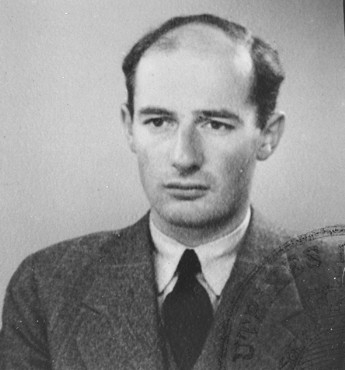
Raoul Wallenberg’s passport photo, June, 1944, Sweden.
The story of the disappearance in 1945 of Raoul Wallenberg, the Swedish diplomat who rescued thousands of Hungarian Jews from the gas chamber, is one of the greatest mysteries of World War II, the New York Times writes.
Suspicion in the disappearance of Wallenberg initially fell on the Soviet Union. After the Soviet occupation of the city Wallenberg’s contacts with high-ranking Nazis and Americans hinted at espionage, with the story of rescuing Jews from the Holocaust possibly a not-very-good cover story. The story of his disappearance has remained a mystery right through Gorbachev’s era of perestroika and throughout the years following the chaos which ensued from the collapse of the Soviet Union.
This summer, however, newly published diaries from a former head of the KGB found hidden in the walls of a dacha are shedding new light and for the first time it can be said with confidence Wallenberg was murdered in a Moscow prison. “I have no doubts that R. Wallenberg was murdered in 1947,” Ivan Serov, a Soviet military officer and director of the KGB from 1954 to 1958, wrote.
Full story in Lithuanian here.


